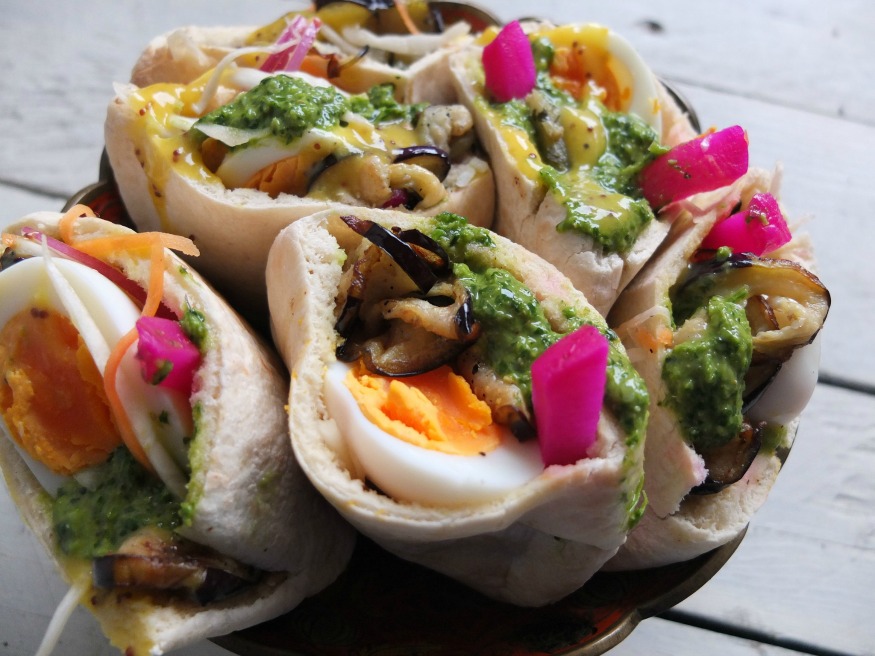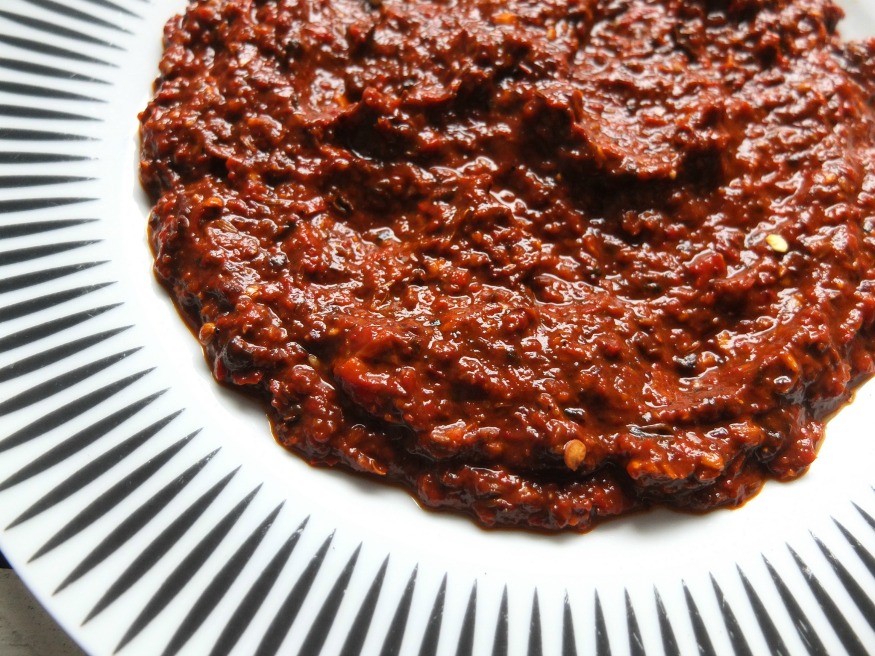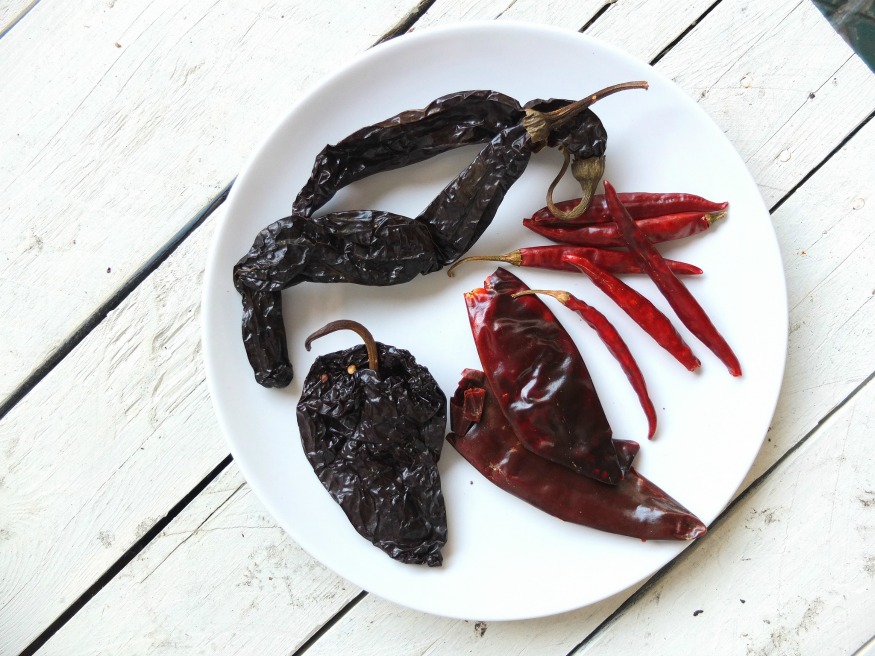
I first tasted sabich in Tel Aviv a couple of years ago. I’d become so obsessed with the idea of tasting one, in fact, I made a point of seeking out as many as possible, managing just three. That number looks a bit more impressive when you consider that I went on a mad dash around the city in the few hours I should’ve spent packing for the airport, and I was eating sabich right up until I buckled into my seat.
The sandwich starts with a soft, round proper Israeli pita, not those cardboard slippers we get in the supermarkets, which is warmed (not toasted), and split for filling. Inside you’ll find sliced potato, hard-boiled egg, fried aubergine, pickles, salads and sauces, including amba. That’s a sweet and tart sauce consisting of mangoes and spices and it basically makes the sandwich.
I’m not sure why it’s taken me so long to make one, and I think part of it was the fear of cooking from increasingly distant memories. The amba is sweet, sharp and vaguely musty, and the zhoug a lightning bolt of green, all zippy herbs and chilli heat.
I’d love to go back to Tel Aviv one day, a thrilling city with incredible food. These sandwiches are a glimmer of that sun-soaked city on a freezing afternoon in South London, and for now, that’ll do me just fine. For now.
Sabich Recipe
Makes 6 pitas with leftover amba and zhoug (a very good thing)
For the amba
Amba is a sweet and sour mango sauce which probably arrived in Israel with the Iraqi Jews and is a common topping on sabich and falafel. It really makes this sandwich.
2 unripe (green) mangoes (you should have no trouble finding these in the supermarket…), peeled and diced
5 cloves garlic, crushed or grated
1 heaped teaspoon mustard seeds
1 teaspoon ground cumin
1 large pinch turmeric
1/2 teaspoon ground fenugreek
1 tablespoon caster sugar
2 tablespoons white wine vinegar
Juice of 1 lemon
1 tablespoon vegetable or groundnut oil, for frying
In a small saucepan, gently heat the sugar with the lemon juice and vinegar, until the sugar is dissolved. Add the mango pieces along with 200ml water and simmer for 25-30 minutes, until the pieces are very soft (you will blend the sauce). In a separate, small frying pan or saucepan, heat the oil and add the mustard seeds. When they start to pop, add the garlic and cook very briefly, stirring, for 30 seconds or so. Add the turmeric, cumin, fenugreek and some salt and mix well. Transfer to a blender and whizz until smooth. Set aside to cool.
For the zhoug
Zhoug is a Yemenite chilli sauce which is fantastic with pretty much everything, including grilled meat and fish.
Large bunch of coriander and stalks
Slightly smaller bunch of parsley and stalks
5-10 green chillies (depending on their heat and your tolerance)
8 garlic cloves
1 teaspoon caraway seed
1 teaspoon cumin seeds
Juice of 1 lemon
2 large pinches of salt
2 tablespoons olive oil
In a pestle and mortar, crush the cumin and caraway seeds. Add the salt and crush the garlic too. Transfer to a food processer with the herbs, lemon juice and chillies and blend to a paste. Add the oil and blend again. Check for seasoning.
For the sandwiches
1 aubergine
3 potatoes
6 small, round, soft pita
3 eggs
1/2 small white cabbage, finely shredded
1 carrot, grated or cut into very fine strips
1/2 red onion, finely sliced
1 teaspoon olive oil
1 teaspoon white wine vinegar
Vegetable or groundnut oil, for frying
First, cook the aubergines by cutting into 1 cm slices, then frying in oil. I used a cast iron skillet for this, with oil to a depth of 1cm. Remove the slices when they are golden on each side and rest on kitchen paper.
Cook the potatoes in salted water. Drain, cool a bit and slice.
Cook the eggs by covering them with cold water. As soon as they start to boil, time them for 5-6 minutes (small-large), then transfer to a bowl of cold water. Peel and cut in half or slice.
Make a salad by mixing the cabbage, carrot, onion, olive oil, vinegar and some salt and pepper.
To assemble the sandwiches
Warm the pittas, but don’t toast them – they should be soft and pliable. Cut the top off and stuff with the ingredients and sauces. Direct into mouth.

